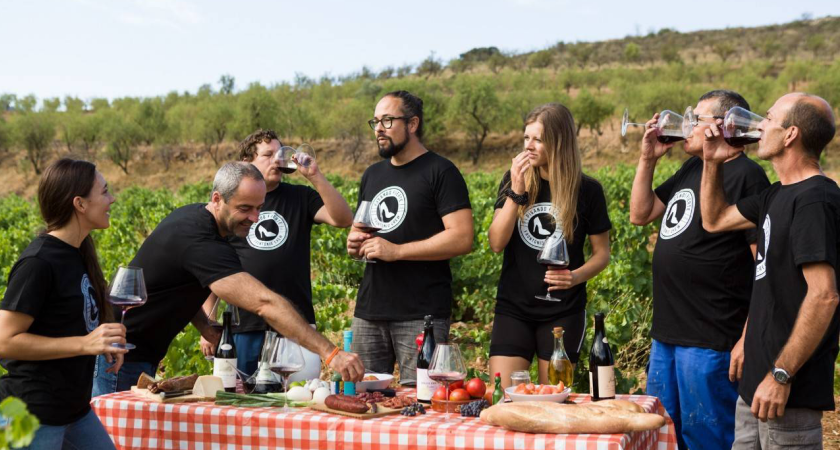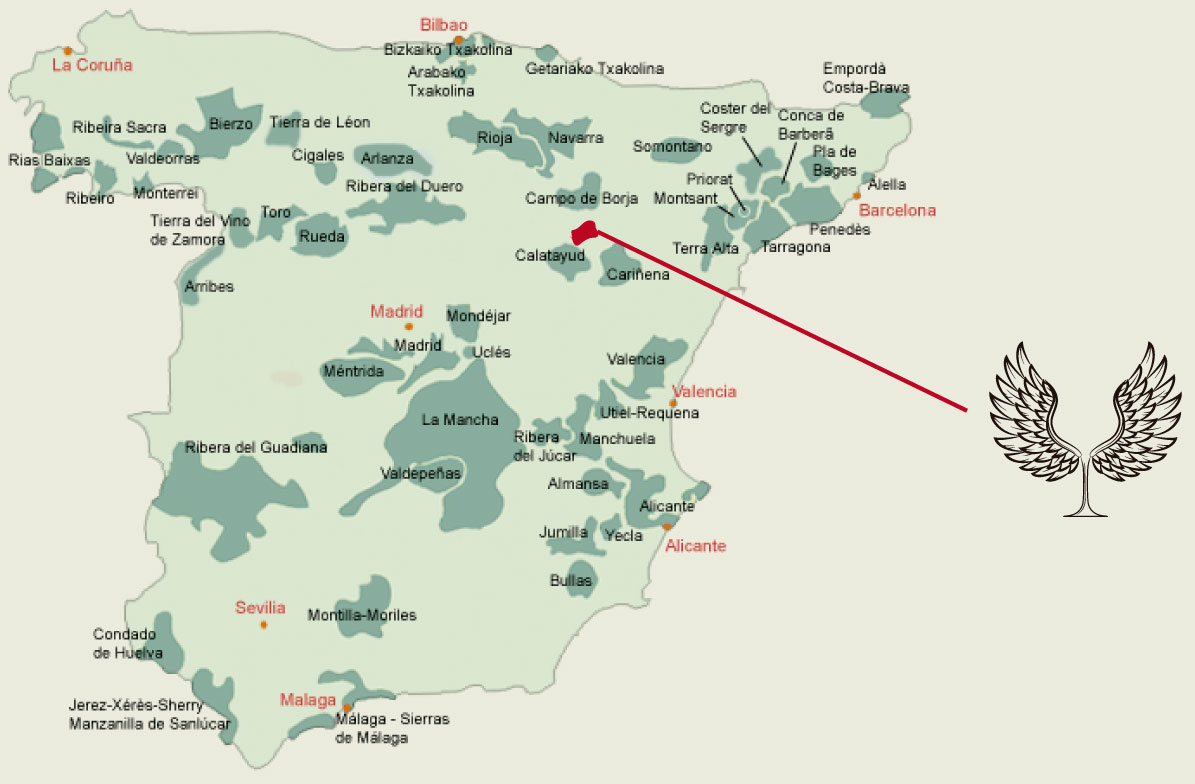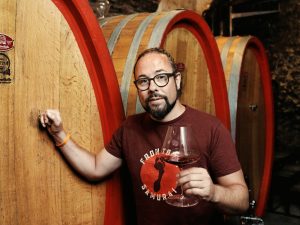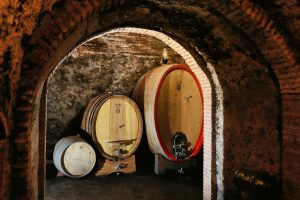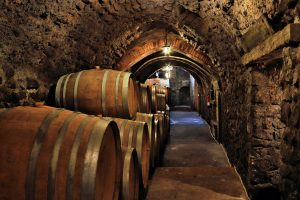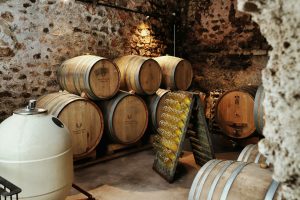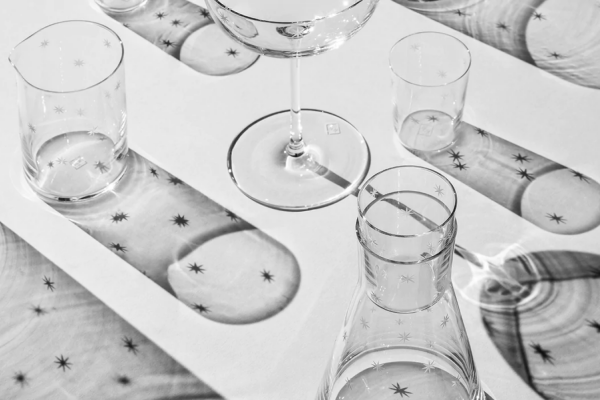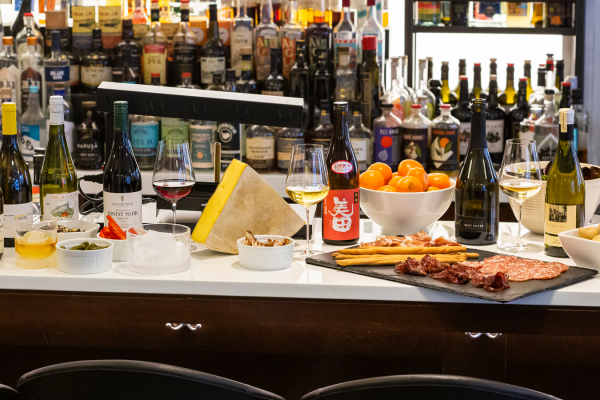Fernando Mora (Center) and the team of Bodegas Frontonio
It’s no secret that we send our Portfolio Managers to remote locales to visit our producers and discover the world’s best wines, sakes, and spirits.
Most recently, Skurnik’s Max Working, headed deep into Zaragoza Provence of Aragon, Spain to meet one of our newest producers: Fernando Mora, MW, of Bodegas Frontonio.
This summer I had the opportunity to visit Fernando Mora of Bodegas Frontonio at his winery outside of Zaragoza. His wines have, as the Spanish say, enchanted me ever since I first tasted them. As always, going to the source proved to be a profound eye-opener.
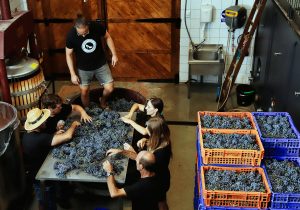 As it happens, Fernando had been discharged from the hospital day before I arrived to Aragón, and while still tottering from bedrest and a strict Aquarius (European Gatorade) diet, he gamely came out to break bread and share a glass. He was definitely not supposed to have wine, but I had schlepped some hip domestic bottles to share with my Spaniards, and the sight of a ’17 Tatomer Kick-on Riesling on the table was too much to resist. ‘I haven’t gone this long without wine since I was a child’, he says, pouring a glass over the strenuous objection of both myself and his colleagues and pronouncing the wine at least equal to any Wachau he’d had recently. (He is an MW, after all— Spain’s fourth.)
As it happens, Fernando had been discharged from the hospital day before I arrived to Aragón, and while still tottering from bedrest and a strict Aquarius (European Gatorade) diet, he gamely came out to break bread and share a glass. He was definitely not supposed to have wine, but I had schlepped some hip domestic bottles to share with my Spaniards, and the sight of a ’17 Tatomer Kick-on Riesling on the table was too much to resist. ‘I haven’t gone this long without wine since I was a child’, he says, pouring a glass over the strenuous objection of both myself and his colleagues and pronouncing the wine at least equal to any Wachau he’d had recently. (He is an MW, after all— Spain’s fourth.)
So anyway, he’s fine—but my guide this time was mostly Mario López, his right-hand man and a mean oenologist. And griller. Mario greeted me in the village of Alpartir after a long, dusty drive from San Sebastián. Alpartir lies on the eastern flanks of the Sistema Ibérico range outside of Zaragoza in Aragón. You’d be forgiven for not recognizing a word of the second half of that sentence, but yes, this is a bit off the beaten path. Once its own independent Spanish kingdom, rubbing flanks with Castile, Navarre, and the Islamic caliphates (the name ‘Zaragoza’ itself is the Arabic attempt at the Latin Caesaraugusta), Aragón nowadays is a bit sandwiched between the much wealthier, outward-facing Cataluña to the east and the better-known Rioja and Ribera to the west. Importantly for our story, though: it’s the genetic birthplace of Garnacha. That’s right—every vine of Grenache/Garnacha/Garnatxa in the 800-kilometer swath from Châteauneuf in the east to Gredos in the west sprang ultimately from here.
Alpartir is a village of 600 souls. There’s a lot of talk in Spain about despoblación – ‘dispopulation’—of the old villages of the interior as more and more youth flee to the coasts and the three or four largest cities, but Fernando planted his flag here. He lives five minutes’ driving away from 75 percent of his vineyards and twenty seconds walking away from his cellar. And what a cellar. At the top of Alpartir runs a road lined with mostly abandoned centuries-old subterranean bodegas carved out of the roots of the mountains. The only signs above ground are the ‘chimneys’ poking up that ventilate down dozens of meters below, but enter in and you’re immediately in the presence of a cool, damp, ancient culture of wine-raising. Fernando has the
most majestic cellar left in town, originally built at the end of the 18th century. There’s three levels, and by the bottom you’re standing in a frigid, buttress-ceilinged wonderland that looks more like a postcard from Carthusian France than something out of deep Spain. It’s here that Fernando’s miraculous Garnachas and Macabeos sleep the sleep of the righteous.Of course, ranks of impeccably maintained French, Austrian and Italian barrels don’t have a lot of room to run without being filled with some of the most characterful grapes being harvested in north-central Spain… so upwards we go. Fifty feet and fifty degrees Fahrenheit above, one emerges blinking into the intense sun and dry, clean air of the mountain flanks. Even with the once-thriving cooperatives long belly-up, the village is encircled with vineyards, and Fernando’s spent the last several years painstakingly incorporating the very best of them into his own holdings. (The amount of politics, paperwork, and old-fashioned family drama that go into the purchase of a single hectare in Spain could be the subject of an entirely separate article…) Old vines and pesticide/herbicide-free dry farming are the watchwords here—the earliest-release cuvées are already certified organic, and in coming vintages the longer-elevage wines are soon to follow. Mora’s lowest-altitude parcels sit above 500 meters, and most of them stretch ever upwards into the mountains at elevations of 600, 700, or in the case of Supersónico, an astonishing 1030 meters. Garnacha reigns supreme, and the Garnacha from here in Mora’s hands (he calls himself the Garnacha Samurai) is truly glorious, achieving the finesse and shimmering intensity-without-weight of the world’s great red wines while retaining its own unique stamp. It’s a more fine-boned, delicate creature than its more prestigious cousins, French or Spanish, and I for one am not complaining a bit. Most of the reds at this address are nearly-varietal Garnachas, though the Telescópico preserves an admixture of Mazuela, or Carignan. The white Macabeo also crops up among these old vineyards, and Mora’s no slouch here either, deftly incorporating it into many of the reds (think Syrah-Viognier) and offering electrically mineral varietal interpretations as well.
TASTING NOTES
The offerings here start with the entry-level Microcósmicos, relatively easy-drinking younger varietal wines that pack serious interest and old-vine complexity into amazingly affordable frames. Alone in the cellar they’re fermented and raised entirely in cement for maximum immediacy. The Telescópico red blend delivers the added depth of longer maceration and used-oak elevage. From here we pass to a series of single-parcel wines that, simply put, argue for Frontonio’s place in the upper echelons of the most exicting domaines in Spain. Súpersonico, mentioned above, hails from over a thousand meters above sea level and marries the dusty warmth of deep Spain with the glacial breath of the Alps. Las Alas is a spherically complete, toe-curlingly complex and astonishingly long—a masterpiece. And then there’s the Jardínes.
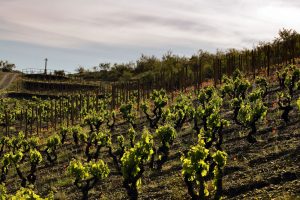
The date is lost, but sometime between 1898 and 1908 a family called Paseta planted a spectacular sheltered amphitheater in a barranco (side valley) of Alpartir to Garnacha with a sprinkling of Macabeo. They called it Las Iguales. The same family tended the vines for over a hundred years, but never commercialized wine from this north-tilted, slate- and quartz-jagged site. Fernando admired this evidently privileged vineyard for years, and in 2016 he was finally able to buy it and turn it into the backyard grand cru of his dreams. He’s refurbishing the dry stone walls, clearing new and higher terraces for new vines, and separating the white and red grapes from the original old vines into bottlings he calls Los Jardínes de la Iguales. The 2018 white and 2019 red—now present in the tristate area for the first time ever— have already made a profound critical splash, with close observers left only to wonder: how much better can it get?
Mora and the Frontonio team are poised and ready.
THE WINES
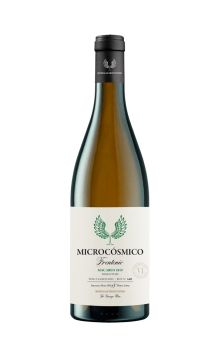
Macabeo ‘Microcosmico’, Bodegas Frontonio
- 100% Macabeo
- Sourced from lieux-dit El Sotillo at 530 meters on limestone
- 65-year-old vines ● fermented spontaneously in cement tanks
- Racked to clean cement for 6 months’ elevage on the fine lees with no batonnage
- Certified Organic
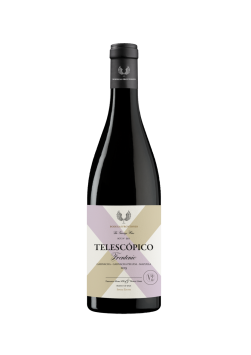
Garnacha Blend ‘Telescópico’, Bodegas Frontonio
- A blend of Garnacha Fina, Garnacha Peluda (a downy, heat-tolerant biotype also found in Cataluña), and Mazuela (Carignan)
- Sourced from a variety of 50-plus year-old parcels at 500-600m on slate and clay-limestone
- Fermented spontaneously in cement with five weeks of maceration
- Racked to used 2500L fudres and 500L barrels for 13 month of elevage
- Practicing Organic (in conversion)
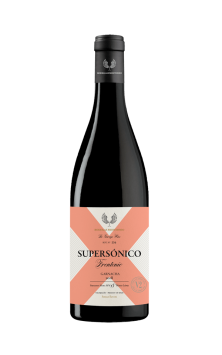
Garnacha ‘Supersónico’, Bodegas Frontonio
- 93% Garnacha with scant (7%) Macabeo interplanted
- sourced from the single 2-hectare parcel Las Frías at 1030 meters (!) planted in the 1940s on sandy slate
- fermented spontaneously with five-plus weeks maceration in cement and wooden cask
- racked to used 2500L fudres and 500L barrels for 12 months of elevage
- Practicing Organic (in conversion)
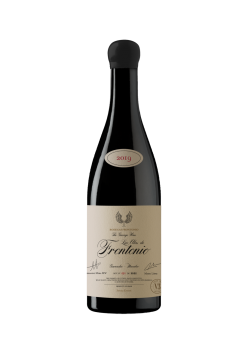
Las Alas de Frontonio, Bodegas Frontonio
- Garnacha (90%) with scant Macabeo and Garnacha Blanca (10%) interplanted
- sourced from the 1.4-hectare La Tejera parcel planted in the 1940s on slate and quartzite at 640 meters
- fermented spontaneously (50% whole-cluster) in cement and wooden vat
- racked to a single Italian botticella for 14 months of elevage
- 2600 bottles produced
- Practicing Organic (in conversion)

Macabeo ‘El Jardín de las Iguales’, Bodegas Frontonio
- 100% Macabeo sourced from Mora’s prize holding: Las Iguales, an amphiteater planted at the turn of the 20th century at 700 meters on slate and limestone
- macerated for 40 hours before whole-cluster pressing and spontaneous fermentation in fudre
- racked to clean fudres for 12 months of elevage, then again to 500L used barrels for additional aging before bottling
- 1300 bottles produced
- Practicing Organic (in conversion)

Garnacha ‘El Jardín de las Iguales’, Bodegas Frontonio
- Nearly 100% Garnacha with a few plants of Macabeo
- Sourced from Las Iguales, an amphiteater planted at the turn of the 20th century at 700 meters on slate and limestone
- 100% whole clusters are fermented spontaneously in large oak vats
- Very long maceration (nearly three months)
- Racked to neutral French foudres for 14 months of elevage • just 800 bottles produced
- Practicing Oragnic (in conversion)




